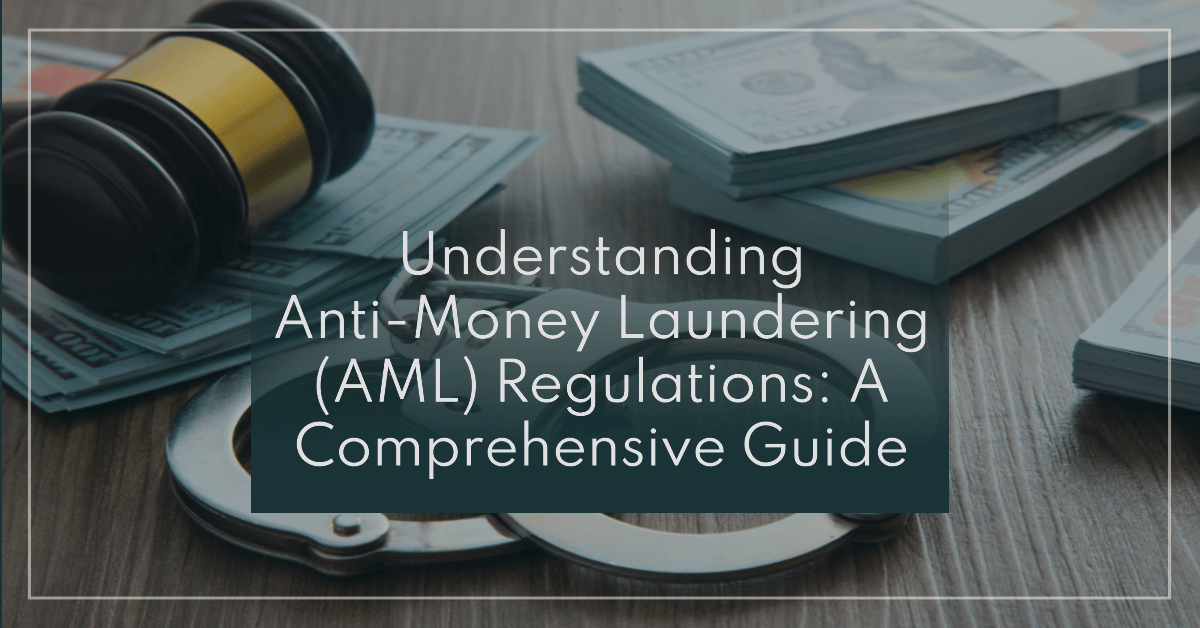Money laundering is no joke! It’s a sneaky and serious problem that can wreak havoc on businesses and countries alike. But fear not, dear reader! In this comprehensive guide, we’ll take you on an adventure through the exciting world of Anti-Money Laundering (AML) regulations.
Get ready to unravel the mysteries, discover the hidden dangers, and learn how to protect yourself and your business from the clutches of money launderers.
What is Anti-Money Laundering?

Money laundering is the process of making illegally acquired funds appear legitimate by disguising their true origin. It’s like a game of hide-and-seek, but with serious consequences. That’s where Anti-Money Laundering (AML) regulations come into play. AML regulations are a set of rules and procedures designed to detect and prevent money laundering activities. These regulations apply to banks, financial institutions, and other businesses that deal with large sums of money.
How Does Money Laundering Work?

Money laundering is a process that involves making illegally obtained funds appear legitimate by disguising their true origin. It typically involves three main stages: placement, layering, and integration.
- Placement: In this stage, the illicit funds are introduced into the financial system. Criminals often seek to place large sums of cash into legitimate financial institutions, such as banks, to integrate them into the economy. This can be done through various means, such as depositing cash in multiple small transactions to avoid suspicion or using intermediaries who have access to the financial system.
- Layering: The layering stage begins once the funds are in the financial system. In this stage, the money is moved, and transactions are conducted to create layers of complexity and confusion. The purpose of layering is to make it difficult for authorities to trace the funds back to their illegal source. Techniques used in this stage include multiple transfers between accounts, converting funds into different currencies, conducting complex and seemingly legitimate transactions, and using offshore accounts or shell companies to obscure the paper trail further.
- Integration: The final stage of money laundering is integration, where the laundered funds are reintroduced into the legitimate economy. At this stage, the funds appear to have a legitimate source and can be used for various purposes without raising suspicion. Integration can involve investing in legal businesses, purchasing assets such as real estate or luxury goods, or simply mixing illicit funds with legitimate funds in bank accounts.
Money laundering techniques continue to evolve, and criminals often employ sophisticated methods to avoid detection and prosecution. They may utilize digital currencies, offshore jurisdictions with tax regulations, or engage in complex international transactions to further complicate the tracing of funds.
The Risks of Money Laundering
Money laundering poses significant risks to businesses and the economy as a whole. Criminals use illicit funds to finance terrorism, drug trafficking, human trafficking, and other illegal activities.
By allowing money laundering to go unchecked, businesses inadvertently become accomplices to these crimes, which can result in severe legal, financial, and reputational consequences. That’s why AML regulations are crucial for protecting businesses and society from the harmful effects of money laundering.
How AML Regulations Work

Now that we understand the importance of AML regulations let’s dive into how they actually work. AML regulations typically involve a three-pronged approach: customer due diligence (CDD), transaction monitoring, and reporting. Let’s explore each of these components in more detail.
Customer Due Diligence (CDD)
One of the key pillars of AML regulations is customer due diligence. This process requires businesses to verify the identity of their customers, assess the risks associated with their transactions, and maintain detailed records. The goal is to ensure that businesses know who their customers are, understand their financial activities and can identify any suspicious or high-risk behaviour.
To comply with CDD requirements, businesses may employ various methods such as obtaining identification documents, conducting background checks, and utilising risk profiling techniques. Businesses can establish a strong foundation for preventing money laundering by collecting and verifying customer information.
Transaction Monitoring
Another critical aspect of AML regulations is transaction monitoring. This involves scrutinising financial transactions for any suspicious patterns or red flags that may indicate potential money laundering activities. Businesses are expected to implement robust systems and processes to monitor transactions in real time or on a retrospective basis.
Transaction monitoring involves the analysis of various factors, including transaction amounts, frequency, locations, and counterparties involved. Automated systems equipped with advanced algorithms can help identify any unusual activities or patterns that warrant further investigation. The aim is to detect and flag transactions that deviate from normal behavior, enabling businesses to take appropriate action in a timely manner.
Reporting
If suspicious activity is detected during customer due diligence or transaction monitoring, businesses must file a report with the relevant authorities. This reporting process is a crucial element of AML regulations as it facilitates information sharing and supports the investigation and prosecution of money laundering offences.
The specific reporting requirements may vary depending on the jurisdiction and industry. In many cases, businesses must submit suspicious activity reports (SARs) to designated financial intelligence units or regulatory bodies. SARs provide detailed information about the suspicious activity, including the parties involved, the nature of the transaction, and any additional supporting evidence.
By reporting suspicious activities, businesses not only fulfil their legal obligations but also contribute to the collective efforts in combating money laundering. It ensures that relevant authorities are informed of potential risks and can take appropriate actions to prevent further illicit activities.
Compliance Challenges and Solutions
Complying with AML regulations can be a daunting task for businesses. The ever-evolving nature of money laundering techniques, the complexity of financial transactions, and the sheer volume of data make it challenging to stay ahead of the game.
However, there are several solutions available to help businesses tackle these compliance challenges. Let’s explore some of these solutions in more detail.

Automated AML Software
One of the most effective solutions for streamlining AML compliance is using automated AML software. These software applications are designed to analyse large volumes of data, identify suspicious patterns, and generate alerts for potential money laundering activities. By leveraging advanced algorithms and machine learning capabilities, automated AML software can significantly reduce the manual effort required for transaction monitoring and reporting.
These software solutions can also integrate with existing systems, such as customer relationship management (CRM) platforms or transaction databases, to streamline information flow and enhance compliance processes’ efficiency. Businesses can improve their ability to detect and respond to potential money laundering risks by automating repetitive tasks and providing real-time monitoring.
Data Analytics
Data analytics plays a crucial role in AML compliance. By harnessing the power of data, businesses can gain valuable insights, detect anomalies, and identify potential risks. Advanced data analytics techniques, such as predictive modelling and network analysis, can help uncover hidden connections and patterns that may indicate money laundering activities.
By leveraging data analytics, businesses can enhance their transaction monitoring capabilities, improve risk assessments, and prioritise their compliance efforts. Analysing historical data can also provide valuable information for trend analysis and identifying emerging threats. By staying proactive and leveraging the power of data, businesses can strengthen their AML compliance frameworks.
Ongoing Training and Education
Another vital aspect of AML compliance is ensuring that employees are well informed and trained on the latest regulations, trends, and best practices. Money laundering techniques evolve rapidly, and businesses need to keep their staff updated with the necessary knowledge and skills.
Organisations should invest in regular training programs that cover topics such as recognising suspicious activities, understanding customer due diligence processes, and complying with reporting requirements. Training sessions can be conducted in person or through online platforms, and they should include practical examples and case studies to enhance understanding.
Additionally, businesses can encourage employees to pursue relevant certifications and professional development opportunities in AML compliance. This enhances their expertise and demonstrates the organisation’s commitment to maintaining a strong compliance culture.
Conclusion
Congratulations! You’ve successfully navigated the intricate world of Anti-Money Laundering regulations. By understanding the risks of money laundering and implementing robust AML measures, you’ve taken a significant step towards safeguarding your business and contributing to a more transparent and secure financial system.
Remember, AML regulations are not just a legal requirement but also an opportunity to protect your reputation and build trust with your customers. So, stay vigilant, stay compliant, and say no to money laundering!


